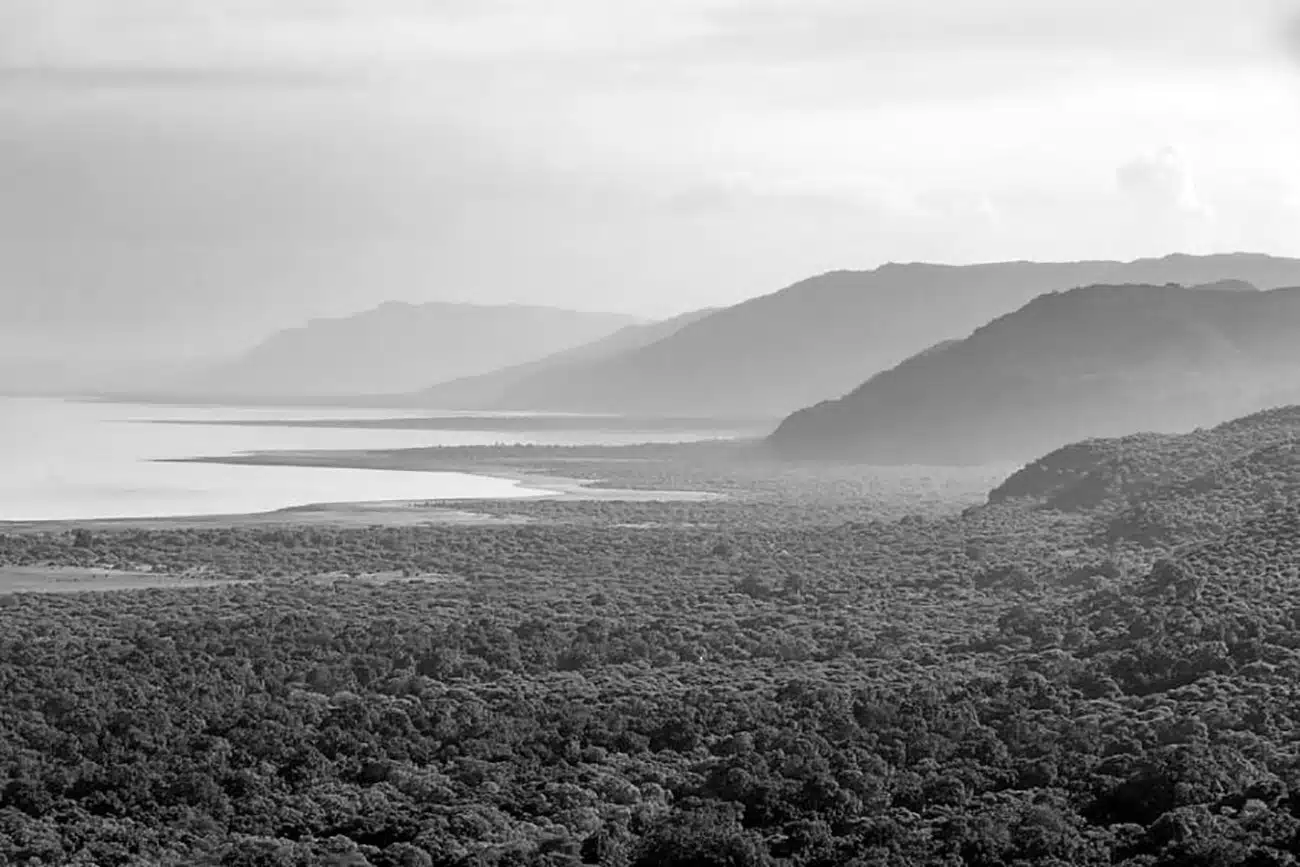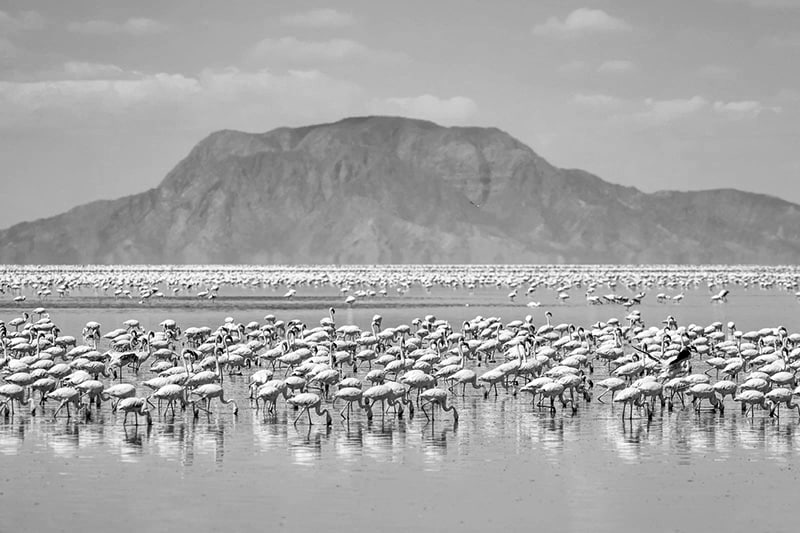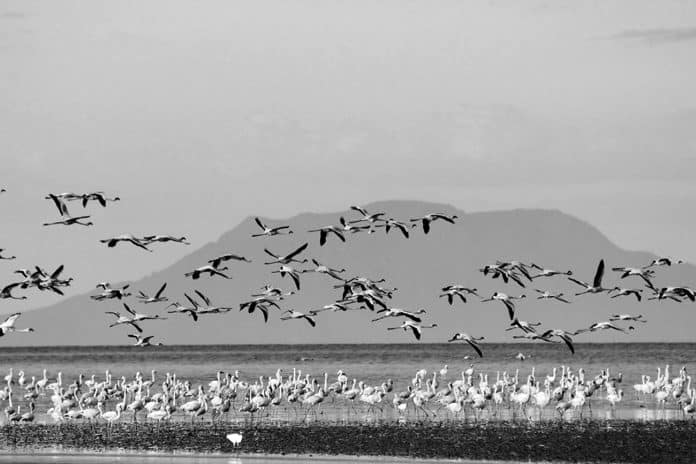Fascinating Facts About the Flamingos of Tanzania: Discover the Pink Wonders of East Africa
Introduction to the Flamingos of Tanzania
Have you ever marveled at the sight of elegant pink birds gracefully wading through the water? If so, you would be enchanted by the flamingos of Tanzania. These majestic creatures, known for their vibrant plumage and distinctive appearance, are a common sight in the East African country. In this article, we will delve into the fascinating world of flamingos in Tanzania, exploring their unique habitat, migration patterns, breeding behaviors, and the efforts being made to conserve and protect these beautiful birds.
The Unique Habitat of the Flamingos in Tanzania

Tanzania, with its diverse landscapes and rich biodiversity, provides an ideal habitat for flamingos. Along the country’s coastline, you can find shallow salt pans and lagoons, which serve as feeding grounds for these magnificent birds. The alkaline-rich waters of these habitats are teeming with tiny crustaceans and algae, which give the flamingos their iconic pink color. Lake Manyara, Lake Eyasi, and Lake Natron are among the most renowned locations in Tanzania where flamingos can be spotted.
Migration Patterns of the Flamingos
Flamingos are known for their extraordinary migratory journeys, and the flamingos of Tanzania are no exception. These birds undertake extensive annual migrations, traveling great distances in search of favorable feeding and breeding grounds. The flamingos of Tanzania follow a circular migratory route, moving from one lake to another within the country’s borders. This movement is driven by the availability of food and suitable nesting conditions. It is truly a remarkable sight to witness thousands of flamingos taking to the skies, creating a breathtaking spectacle against the African landscape.
The Significance of Lake Natron for Flamingos in Tanzania
Among the many lakes that host flamingos in Tanzania, Lake Natron holds a special place. Located in the northern part of the country, this alkaline lake is a sanctuary for these magnificent birds. The hot, arid climate and the abundance of alkaline-rich waters create the perfect conditions for the flamingos to breed and thrive. The lake’s shallow waters and the presence of volcanic ash provide a natural barrier against predators, ensuring the safety of the flamingo colonies. The significance of Lake Natron as a breeding ground for flamingos cannot be overstated, making it a must-visit destination for bird enthusiasts and nature lovers.
The Pink Color of Flamingos and Its Meaning
One cannot help but be captivated by the striking pink hue of the flamingos. But have you ever wondered about the reason behind this vibrant color? The pink color of flamingos is a result of their unique diet. These birds feed on small crustaceans and algae that contain pigments called carotenoids. These carotenoids are responsible for the pink coloration of the flamingos’ feathers. The intensity of the pink color can vary depending on the availability of these pigments in their diet. The brighter the pink, the healthier and more well-nourished the flamingo is. This stunning display of color not only serves as a visual treat but also indicates the flamingos’ overall health and fitness.
Breeding and Nesting Behaviors of Flamingos in Tanzania
The breeding and nesting behaviors of flamingos are truly remarkable. These birds form large colonies, with thousands of individuals coming together to create a bustling community. The flamingos’ courtship rituals are a sight to behold, involving elaborate dances and synchronized movements. Once a pair has formed, they build their nest using mud and vegetation, creating a sturdy mound on which the female lays a single egg. Both parents take turns incubating the egg, ensuring its safety and warmth. After a month-long incubation period, the chick hatches and is cared for by its parents. Witnessing the breeding and nesting behaviors of flamingos in Tanzania is a truly awe-inspiring experience.
Threats to the Flamingos of Tanzania
While the flamingos of Tanzania continue to mesmerize visitors with their beauty, they face numerous threats to their survival. Human activities such as pollution, habitat destruction, and disturbance of nesting sites pose significant risks to these birds. Climate change and fluctuating water levels also affect the availability of suitable feeding and breeding grounds. Additionally, the extraction of soda ash from Lake Natron, although a valuable industry for the local economy, poses a threat to the delicate balance of the flamingos’ habitat. It is crucial that we address these threats and work towards sustainable practices to ensure the survival of the flamingos in Tanzania.
Conservation Efforts and Initiatives for Flamingos in Tanzania
Recognizing the importance of preserving the flamingos of Tanzania, various conservation efforts and initiatives have been put in place. National parks and wildlife reserves play a vital role in protecting the habitats of these birds and enforcing regulations to prevent disturbance. Local communities are also actively involved in conservation projects, raising awareness and promoting sustainable practices. International organizations collaborate with Tanzanian authorities to support research, monitoring, and conservation programs. These combined efforts are essential in safeguarding the flamingos and ensuring their continued presence in the Tanzanian ecosystem.
Best Places to See Flamingos in Tanzania

If you are eager to witness the captivating beauty of flamingos in Tanzania, there are several must-visit locations where you are likely to encounter these magnificent birds. Lake Manyara National Park, with its diverse birdlife and picturesque scenery, offers a wonderful opportunity to observe flamingos up close. Lake Eyasi, a shallow soda lake in the Great Rift Valley, is another prime location for flamingo sightings. Lastly, Lake Natron, with its flamingo breeding grounds and breathtaking landscapes, is an unmissable destination for any bird enthusiast. Remember to bring your binoculars and immerse yourself in the wonder of these pink wonders of East Africa.
Conclusion: The Beauty and Importance of the Flamingos in Tanzania
The flamingos of Tanzania are not only a sight to behold but also an integral part of the East African ecosystem. Their vibrant plumage, unique behaviors, and significant role in the food chain make them a species of great importance. It is our responsibility to protect and conserve these magnificent birds for future generations to appreciate. By promoting sustainable practices, supporting conservation efforts, and raising awareness, we can ensure that the flamingos of Tanzania continue to grace our skies and inspire awe in all who encounter them. So, pack your bags, embark on an unforgettable journey, and immerse yourself in the wonder of the pink wonders of East Africa.
For more articles related to Wildlife in Tanzania (Animals), click here!
































